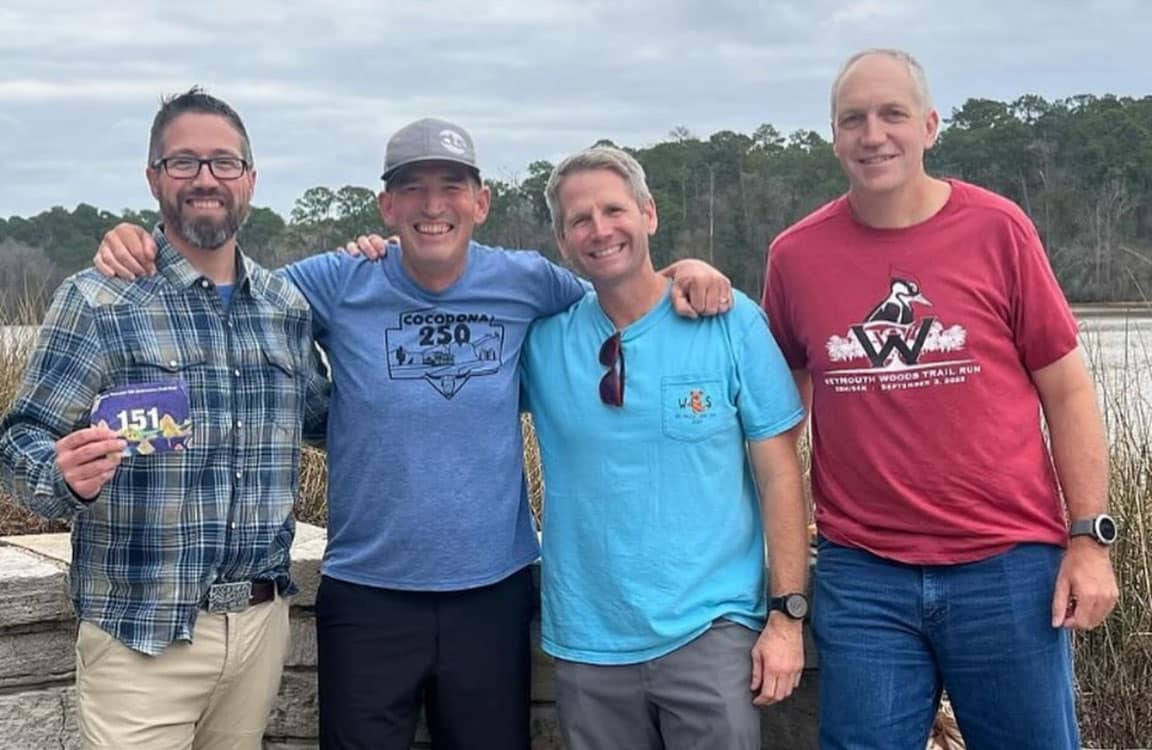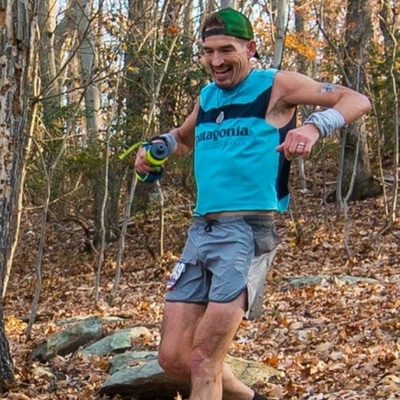
Coach Andy’s Tips for Overcoming Adverse Weather in Ultramarathons
By Andy Jones-Wilkins,
CTS Ultrarunning Pro Coach,
host of “Crack a Brew with AJW Podcast”
I recently had the opportunity to provide race support for four athletes I coach at the Rocky Raccoon 100 in Huntsville, TX. Rocky is an early season ultra with a reputation of being one of the “easier” 100-mile races on the circuit. As a result, many runners come to Huntsville each February seeking a sub-24 hour 100-miler, a Western States qualifier, or a good, solid training race in advance of primary goal later in the season. My four athletes traveled to Rocky for these reasons but, as she often does, Mother Nature intervened.
The weekend before the race the Huntsville area was inundated with over 11 inches of rain causing, among other things, a tentative closure of the park where the race is held. Fortunately, dry conditions allowed much of the trail to dry out by the eve of the race, until a torrential downpour the evening before the race added more water and mud to the proceedings. By the time runners toed the line for the race on Saturday morning, they knew they were in for something a bit different.
The race is made up of five 20-mile loops and I had the chance to recon the course while my athletes were racing. I quickly realized this year would be far from a typical year at Rocky Raccoon. After I returned from my preview run, I had to quickly put together some messages my athletes would need for success. Although I originally created the following guidance for the 2024 Rocky Racoon, you can apply these ideas to any race where the weather changes on you unexpectedly:
Adjust Expectations
In a typical year, the Rocky Racoon 100 has one of the highest finisher rates in all of North American ultrarunning. After experiencing the course firsthand, I knew 2024 would be different. As each of my athletes completed their loops, I spent time talking with them about adjusting their time goals, as well as their experiential goals, because the wet, muddy conditions were only going to get worse. The more quickly you accept the reality of changing and worsening conditions, the better you’ll be able to cope with the adversity. Grumbling about the mud or the cold or comparing current conditions to what it would have been like in the sunshine is a quick way to ruin your day.
Make Deliberate Gear Decisions
While running is simple sport at its core, in adverse conditions decisions about gear and nutrition are critical. It’s not just that you must cope with mud or being wet. You must also realize that if weather slows you down, then you will be on the course much longer than planned. From headlamp batteries to rain jackets, I asked each of my runners to think through everything they might need on each lap. It was important to reinforce this process each lap, because just one lap without the right gear could have ended with a DNF.
To make deliberate gear decisions, you must already have the gear on hand. When the weather changed rapidly, I saw athletes at Rocky Racoon and the 2024 Black Canyon Ultras in Arizona scrambling for jackets, gloves, hats, socks, and more. Do yourself a favor and pack an “I’ll never need this” bag when you go to an ultramarathon. Pack it with cold and wet weather gear even if you’re racing in the desert or in the summer. Ideally, you’ll never dip into that bag, but let me tell you, if you need it just once you’ll be happy you lugged it to races all those other times.
► Free Ultrarunning Training Assessment Quiz
Take our free 2-minute quiz to discover how effective your training is and get recommendations for how you can improve.
Remain Mentally Engaged
Throughout the day and night I repeatedly heard the same refrain from runners who chose not to continue: “I am just done with this!”, “I cannot go back out there.”, “This just isn’t fun.” As I encountered my athletes lap after lap, I tried to steer them away from a hopeless mindset and instead tried to keep them mentally engaged. The most effective technique was to help them shape their experience in ways that honored what they’d been through and celebrated how happy they would be when they got to the finish line.
Enjoying This Article? Get More Free Running Training Tips
Get our coaches' best training advice, delivered straight to your inbox weekly.
When the mud stopped flying, three of my four athletes finished. The one athlete who didn’t finish called it a day after 60 miles because the mud caused a resurgence of an old hip flexor injury. Although athletes don’t need anyone’s “permission” to stop, we did discuss the situation and agreed that stopping at 60 miles was wisest choice. The three athletes who completed the race all finished with smiles on their faces and deep feelings of satisfaction knowing they had persevered.
By adjusting expectations, paying attention to the little things, and keeping their heads in the game, my athletes not only finished a tougher-than-normal Rocky Racoon, but the experience should create confidence they can handle adversity at future races. And that’s part of the reason I believe athletes should resist the urge to quit races even when conditions or circumstances put pre-determined goals (like finishing times) out of reach. Use the sloppy, cold, muddy, and gnarly races as learning opportunities so you have greater resilience in the face of future challenges.


Comments 3
Great advice AJW. Packing a bag with gear “you never need” is key. This came in handy at Javalina last year as running through the night was much colder than I had anticipated. Thank you!
Andy this hit close to home as I DNFed at mile 80 in the 2023 LOViT race due to hip flexor and it not being fun in the cold and rain. However post race self-reflection helped me overcome similar terrible conditions to finish 2023 Burning River. There can be much learning even in a DNF.
Andy Great article and advice! Mike